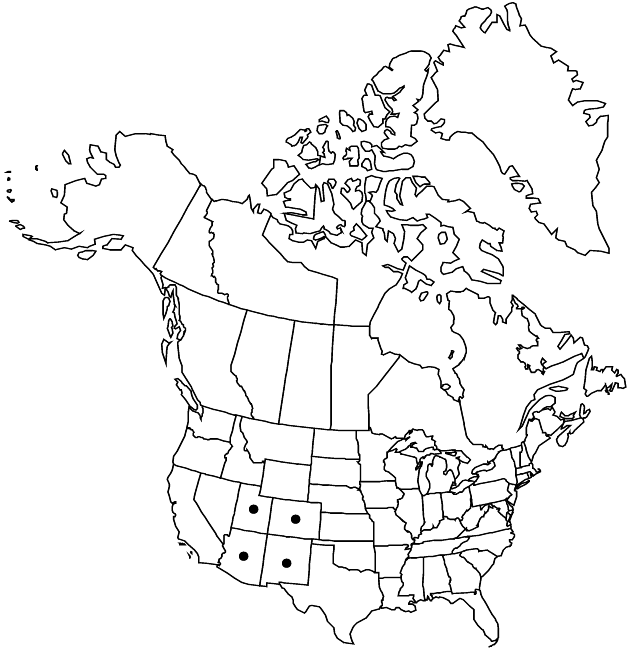Tetraneuris ivesiana
Pittonia 3: 269. 1898.
Perennials, 10–26+ cm. Caudices ± branched, branches notably thickened distally. Stems (1–)5–20(–30), erect, leafy, ± branched distally. Leaves basal and cauline, entire, glabrous or sparsely to moderately lanuginose to sericeous, usually densely gland-dotted; basal leaves tightly clustered, blades linear-oblanceolate; proximal cauline blades linear-oblanceolate; mid blades linear-oblanceolate to linear, 1.7–2 mm wide; distal blades linear-oblanceolate to linear. Heads (1–)5–30(–40) per plant (1–5 per stem), borne singly or in paniculiform to corymbiform arrays. Peduncles 5–18.5 cm, ± hairy, usually densely hairy distally. Involucres 8–12 × 13–17 mm. Outer phyllaries 7–12, 5–6.4 mm, margins 0–0.3(–0.4) mm wide, usually scarious, abaxial faces ± hairy. Ray florets 7–10; corollas 10–20 mm. Disc florets (40–)80–150+; corollas yellow, 3.3–4.5 mm. Cypselae 3–4.1 mm; pappi of 5–7 lanceolate or obovate to oblanceolate, aristate scales 2.7–4.5 mm. 2n = 28, 30, 56, 60.
Phenology: Flowering Apr–Aug.
Habitat: Roadsides, hillsides, open treeless areas, edges of woods
Elevation: 1300–2900 m
Distribution

Ariz., Colo., N.Mex., Utah.
Discussion
Selected References
None.